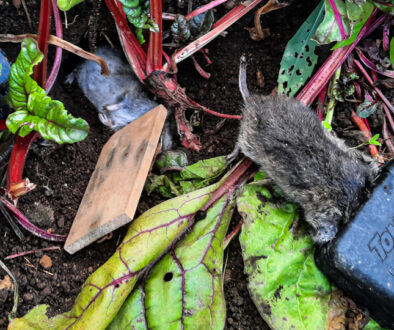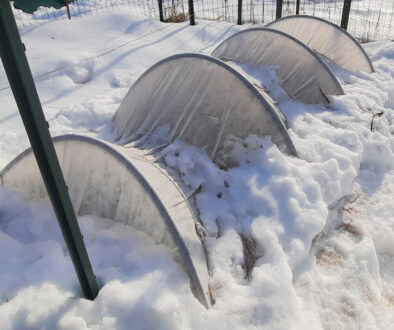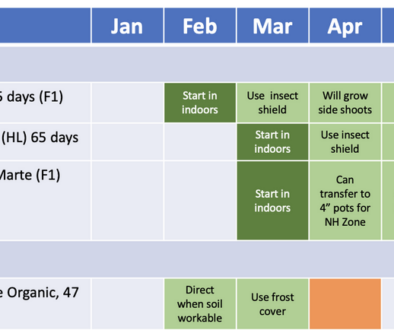August rolls around and the weather usually dries up. The vegetable garden should be watered every day. This will make tender greens, and juicy tomatoes and keep the overall health of the garden. Water features will deter thirsty animals from pecking and biting fruit. Sometimes wildlife wants a drink of water, so to divert them from pecking at the fruit, best to keep a filled water feature – which could be a pan of water placed near the tomatoes, a bird bath, or a small pond.
Garden fertilization basics.
Fertilize everything at least once a month with fish emulsion. I do this the first of every month cause it’s easy to remember. This helps green growth and keeps the bunnies away. Blood meal and bone meal will also keep the rodents and bunnies away. Blood meal is a rich nitrogen fertilizer and bone meal is a calcium and phosphorous source generally good for root growth. Finally, potassium or potash sourced from wood ash or seaweed (or other minerals) is for the overall health of the plant and a healthy plant will resist insect damage to a degree. Keep the nitrogen low if you want blooms and buds.
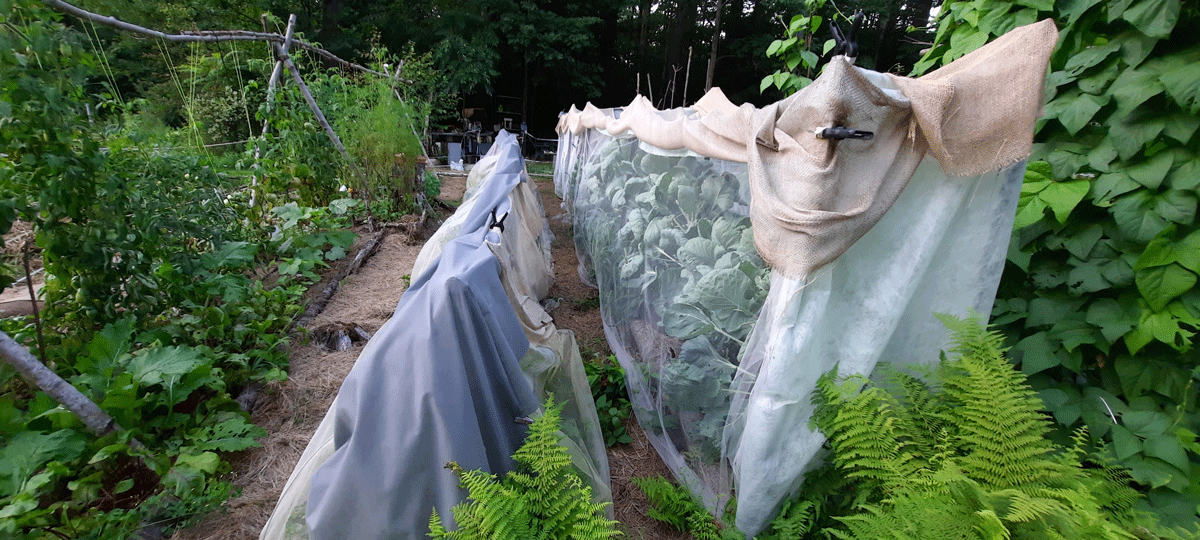
Garden pest control
I keep things as organic as possible and limit the amount of insecticide used by caging or netting crops. Brassicas ( Brussels, cabbage, broccoli, cauliflower) are a target for loopers and caterpillars so I have been using toule to net them under a row tunnel. Next year I have planned a commercial-grade bird/insect net that is 25×50 and will be big enough to walk under. We used this over our grape arbor and had a practically insect-free harvest.
BT (Bacillus thuringiensis) – used for catapillars
Pyrithrin – used for beetles (not to be confused with Permethrin which is used on my hiking clothes to kill ticks and lasts 7 washes)
Beer – used for slug traps
Iron Phosphate – used for slugs (Sluggo)
Dawn dish liquid – thinned in water – for soft-bodied insects such as aphids – be careful on some plants – as it will damage apple leaves.
Seven – used sparingly at the base of squash plants – before flowering – for borers
Blood meal – also a high nitrogen fertilizer – used to repel bunnies
Snap traps – for small rodents. If I find a vole hole I set three traps around the hole and cover all three, and the hole, with a box. Also set over peas and beans right after planting.
Repels all: Brand – made mostly with castor oil, and cedar oil, seems to work. Use after, not before rain, and reapply as needed.
Attracting birds
If I haven’t mentioned this, start a pollinator garden. This should have something in bloom every month. In August the cosmos, bee balm, and morning glories attract birds as well as bees. Birds help control the insects and are nice to watch.
Garden scan of August
Beets: Harvested 3-4″ beets with not too much slug damage on the leaves. I keep a slug trap nearby with beer.
Apples: Japanese beetles, spray with pyrethrin (painted daisy extract), fertilize
Zukes: weak this year – about 4″ plants, fertilize
Cukes: harvested approximately a gal bucket of pickling to make relish
Melons: Large Minnesota midgets doing very well, elongated softball-sized watermelon, small jarkara appearing
Beans: Bush (flambo) sad – possible bunny problem, used saved seeds from last year. pole bean (good mother) 10 feet tall and flowers just starting to appear.
Brussels: 2 feet high, buds starting
Cauliflower: The second planting went in last week, Slug damage from seedlings grown in hoops house with trays left on the ground
Broccoli: Harvested mostly second shoots
Tomatoes: lost six with bites from varmints, possibly chipmunks wanting water. Snap traps set last night caught 3 mice.
Butternut: fertilize
Pumpkins: One large basketball, a few small
Potatoes: One row to be harvested and replanted with beets
Peach trees: Mulch
Tomato evaluation – all heirlooms
Though this is the Aug entry I’m writing this Sept 23 so I have a bit more insight
First set harvested mid-july, on to second set, watch for blossom end rot and use mag-cal if seen. Look for horn worm damage and use black light at night to capture and remove. Bligh on most varieties – OK to just leave the leave on – or remove if too much dampness.
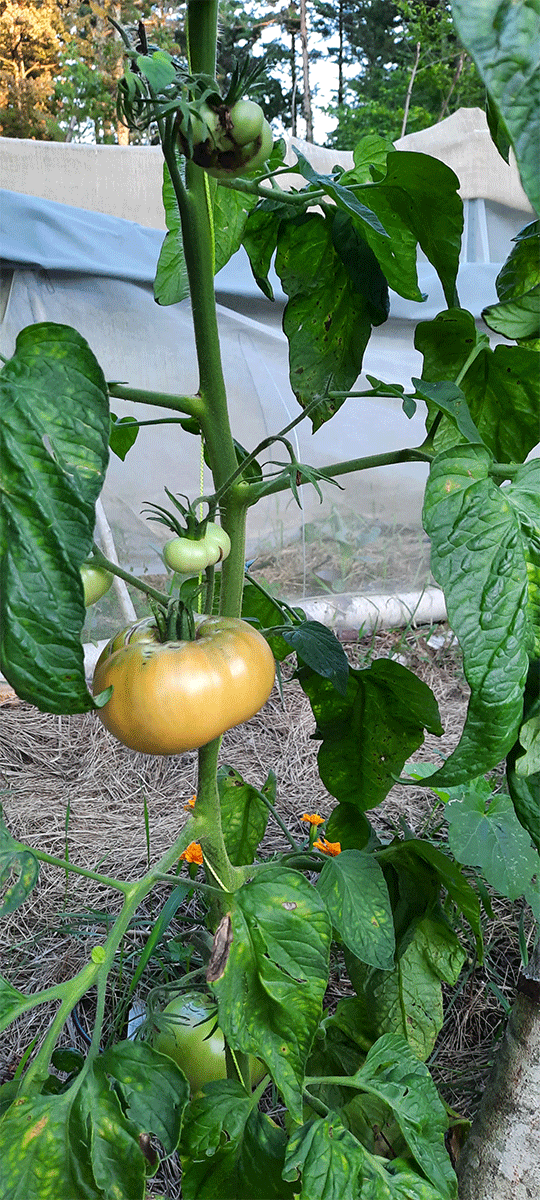
Yellow Brandywine: Slicer. Good producer, 6-7ft, 8″ blight, remove misshapen fruit. Delicious slicer.
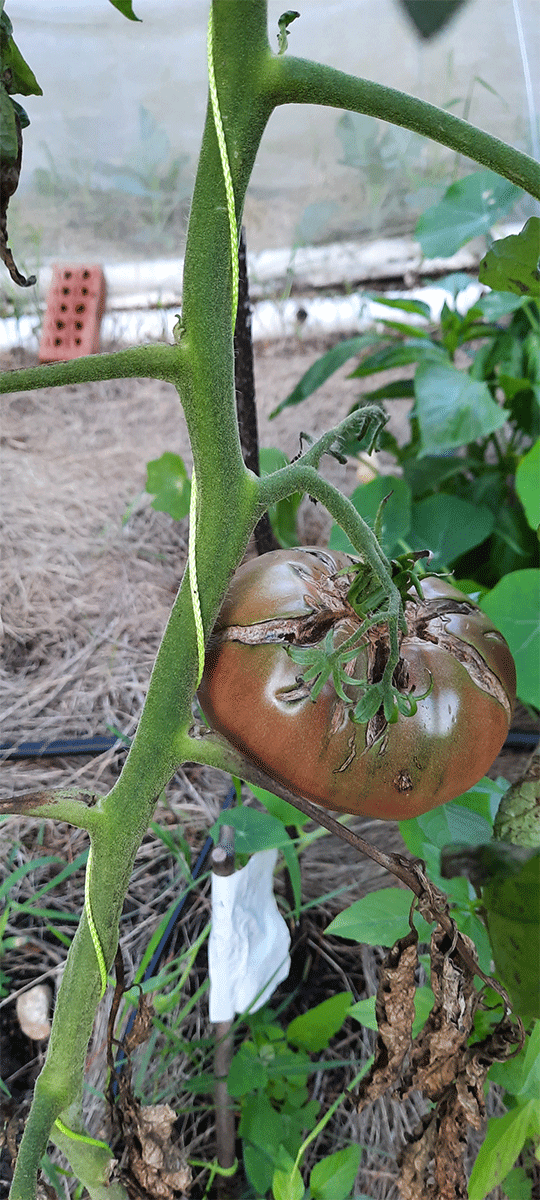
Cherokee Purple: Despite all the hoopla about this being a tasty heirloom, there was a lot of cracking around the top and the green seeds were unappetizing on a caprice salad. Blight was 12″ up the plant, though a OK producer with consistently rounded fruit, I won’t be planting this next year.
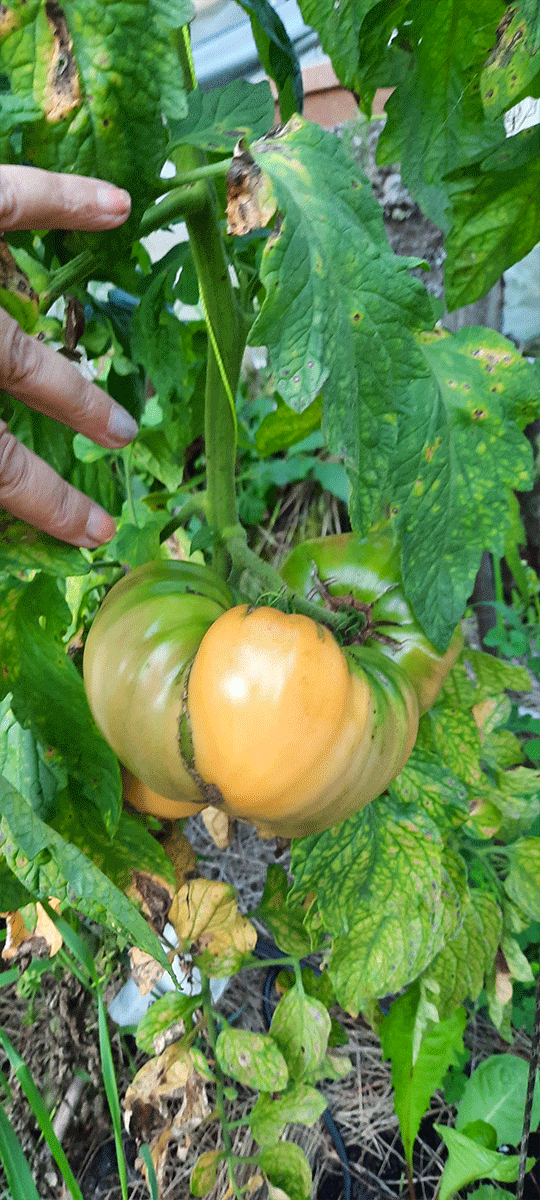
Dr. Wyche’s: This was an internet influencer find as their favorite tomato and is quickly becoming mine. These carried enormous fruits in clusters of 3-6. In fact one cluster of 5 ripped off the vine, and ripened on the counter and each was still delicious. Set-one has 2 6″ remaining, and the second-set has 13 coming along at 4-5″ currently and is about 7ft high.
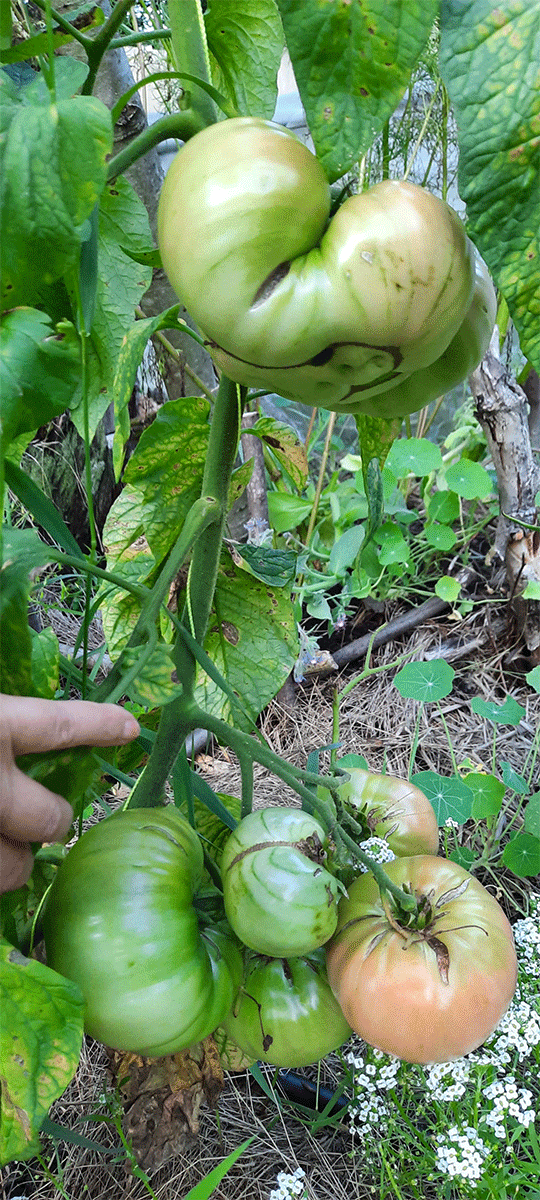
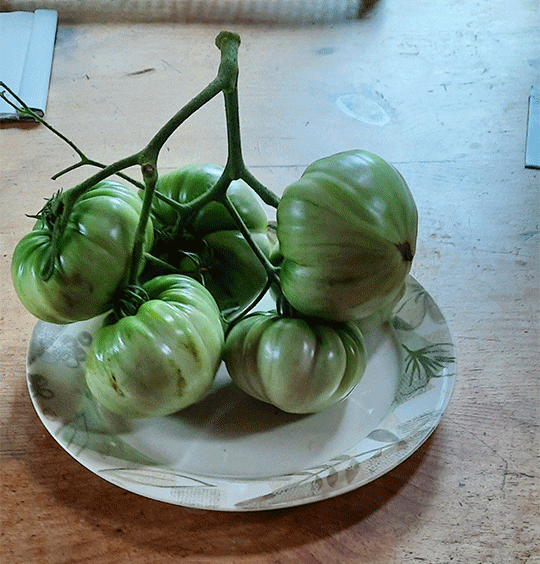
Brandywine: Red slicer – producer with inconsistent shape, leaving me with another slicer to find for next year – I may go back to my mainstay – the beef master. plants were about 5 ft high with 13 second set coming along. Blight just starting.
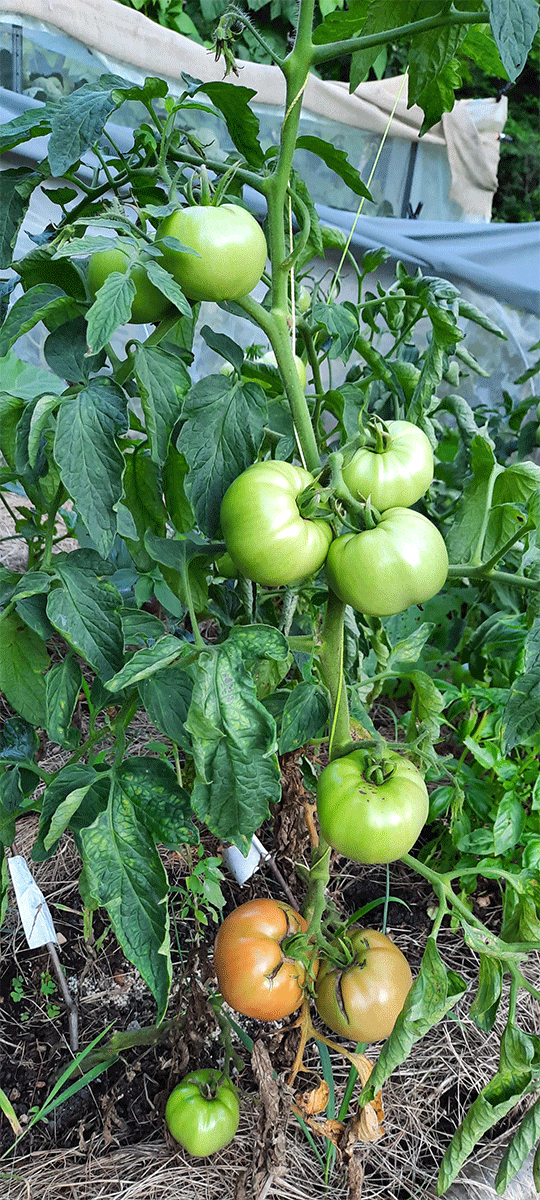
Bonny best: consistent baseball-sized good producer on shorter plants. 14 on the second set, with 10 on the third set. Good for slicing and sauce (and canning/freezing). Small cavity.
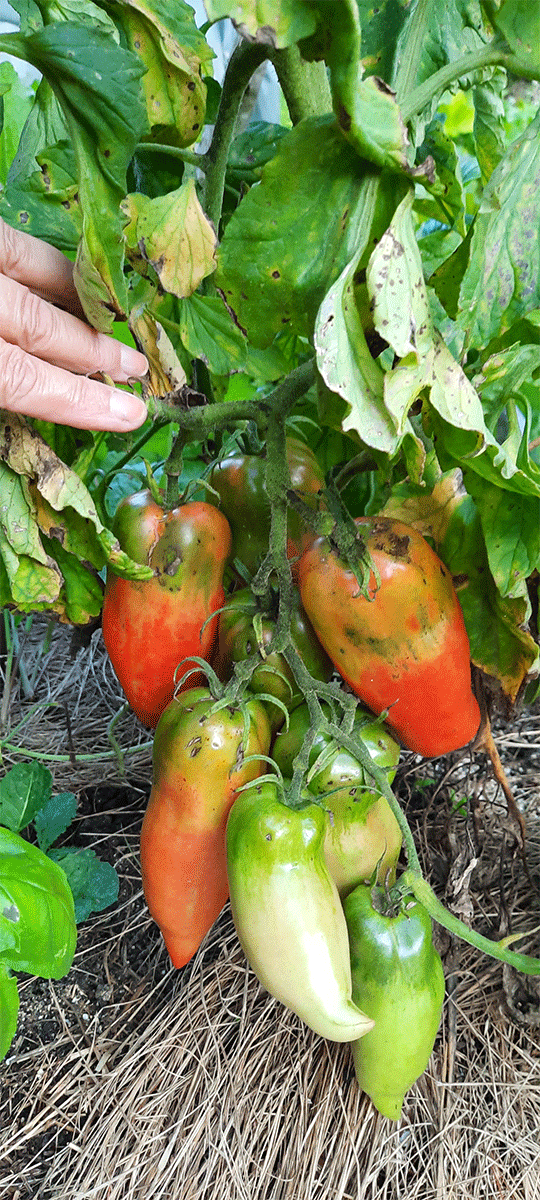
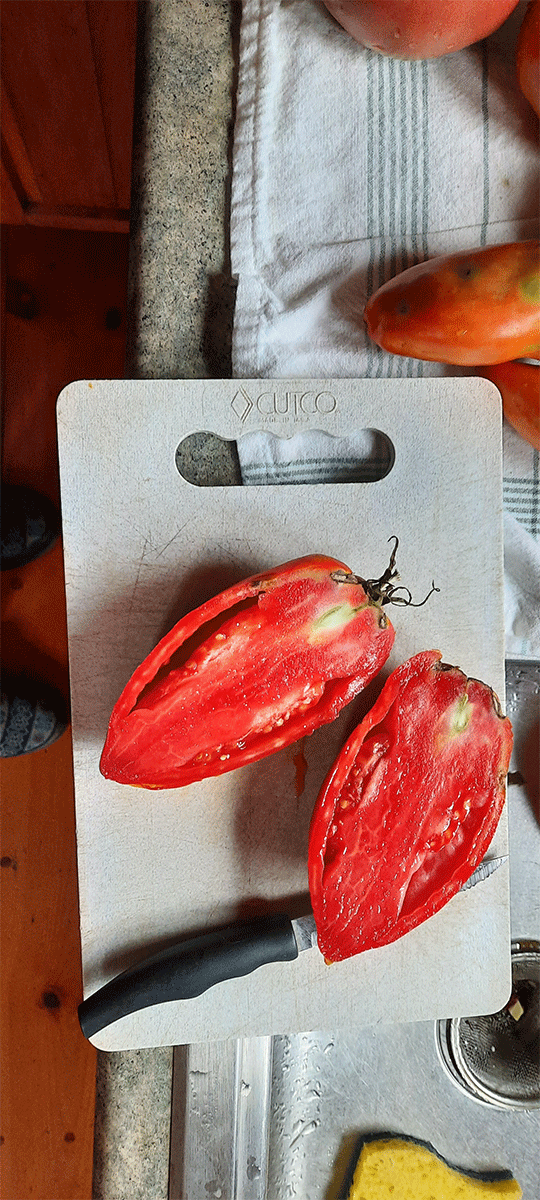
Hogs Heart: Paste, a small cavity, with a mild taste, great for sauce. Only tomato that got blossom end rot, quickly resolved with cal-mag and fish fertilizer with seaweed once a week till no longer visable. Good producer with clusers of 7-9. second set has 18 tomatoes, third set 17, and the fourth set 15. blight just started. Have frozen these in gallon bags.
Tomato plans for next year: more hogs heart, find a better red slicer.
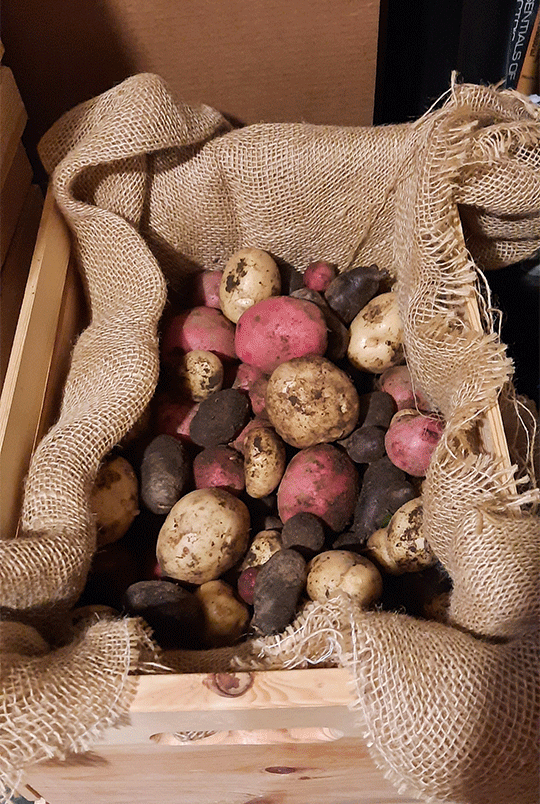
Potato Harvest
Disappointing this year. Lost half the harvest to rodents. Planted Katadin, Red Maria, and purple mollies
Set traps caught momma mouse, and pappa mouse (the biggest mice I ever encountered and had to check three times to identify it as a mouse and not a rat! I captured 4 baby mice up at the place I just planted.
The best way to trap mice or rodents in slap traps is to find out what they are eating and clip a small peice into the trap. I’ve used pieces of carrots, potatoes, peas, and pumpkin seeds.
As a back-up peanut butter with a jammed-in pumpkin seed works well.

